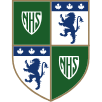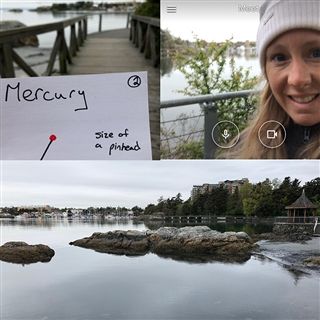With the start of their Science unit on Space, Grade 6 Science students had the chance this week to go on a virtual tour of the solar system when they walked around their neighbourhood, backyard, or house. Ms. Ana Vera and Ms. Shawna Parks took the students for a walk around their neighbourhoods as their classes attempted to recreate the distance between the planets. Unlike diagrams of the Sun and planets in books, solar system models don’t adequately represent the vast distances between the planets. Even the largest models, such as at the ceiling-covered Hayden Planetarium in New York, or the Morehead Planetarium at Chapel-Hill, are both far too small. Planet Walks aim to show that in reality, the planets are small, and the distance between them is always very large. The only way to really “see” the distance is to go outside. This activity is something Ms. Ver and Ms. Parks do with students every year, but due to the current COVID-19 restrictions, they had to incorporate some help from technology to allow the students to experience the walk together. Students worked together in their online classroom to decide, based on the ball that represented the sun, what other household objects could provide reasonable scale models for the other planets. They then used Google Sheets to calculate how to scale down the actual distances between the planets to paces that matched the scale of their planet models. For the walk, the planets were represented by these objects:
- Sun – a ball
- Mercury – a pinhead
- Venus – a peppercorn
- Earth – a peppercorn
- Mars – a pinhead
- Jupiter – a chestnut, pecan or larger bouncy ball
- Saturn – a hazelnut, acorn or a smaller bouncy ball
- Uranus – a peanut or coffee bean
- Neptune – a peanut or coffee bean
Watch a recap of Ms. Vera on her Planet Walk:





